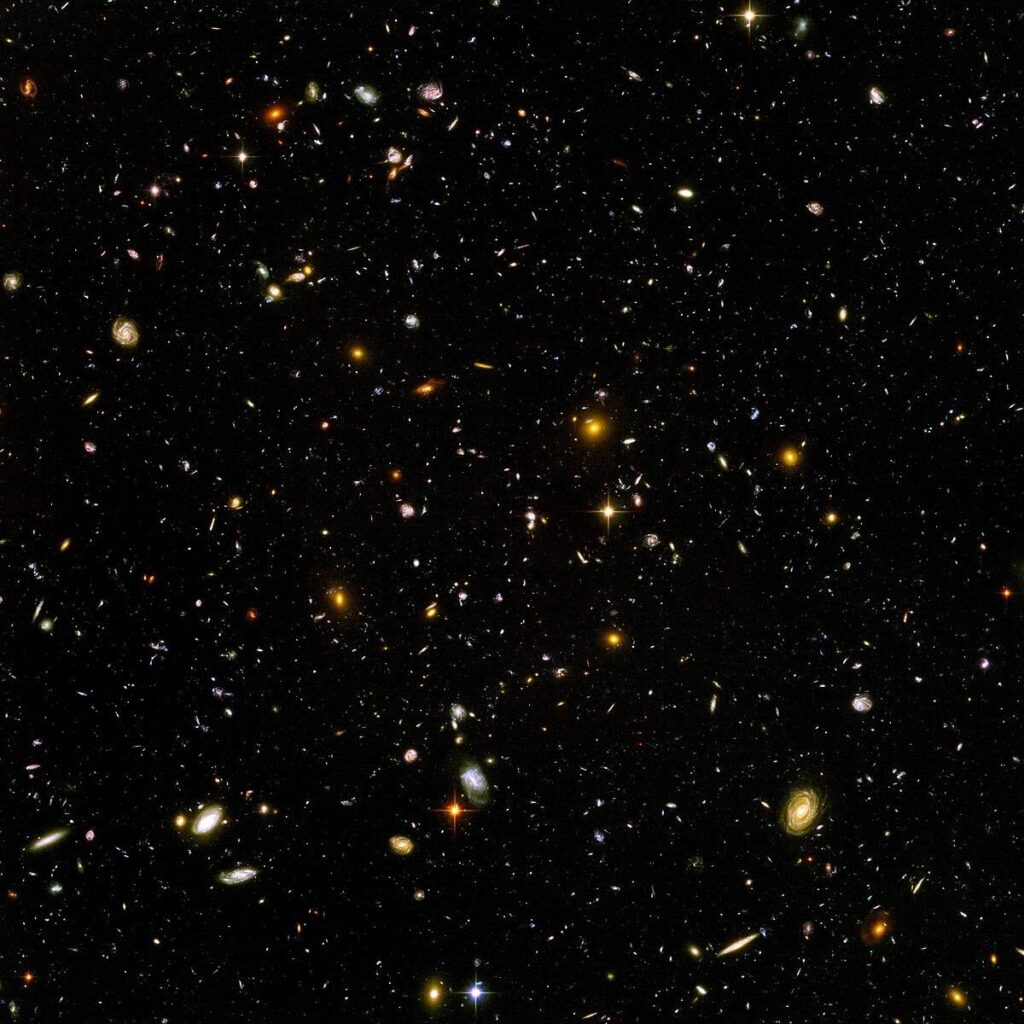In a remarkable development that could transform our comprehension of the universe, astronomers have reportedly found evidence of the elusive “missing matter” that has perplexed scientists for many years. For an extended period, researchers have posited that a considerable fraction of the universe’s mass consists of diffuse gas and dark matter, yet these components have largely evaded detection through traditional observational techniques. Recent findings highlighted in a report by Live Science indicate that this mysterious material may finally be within reach. This breakthrough not only promises to resolve enduring questions regarding the universe’s makeup but also opens avenues for further investigation into the fundamental forces shaping our reality. As scientists explore this thrilling advancement, it prompts new inquiries about the essence of matter and humanity’s role in the expansive cosmos.
Unveiling Hidden Matter and Its Cosmological Significance
The recent identification of hidden matter within our universe carries significant implications for cosmology. For years, scientists have wrestled with what is termed “missing matter,” which refers to substantial amounts predicted by theoretical models but not directly observed until now. Researchers believe they have pinpointed potential sources for this elusive substance, thought to reside within filaments forming a cosmic web—a vast structure linking galaxies across immense distances. This revelation not only bridges critical gaps in our understanding but also modifies essential equations governing cosmic evolution.
Furthermore, these insights could revolutionize astrophysics by providing explanations for various enigmatic phenomena such as galaxy cluster behavior and dark matter distribution patterns. The ramifications extend beyond mere numerical data; we may be on the verge of establishing an integrated framework encompassing both visible and hidden components within our universe. Key aspects surrounding this discovery include:
- Detection Techniques: Innovative observational methods utilized to uncover hidden matter.
- Impact on Cosmic Web: The influence of hidden matter distribution on gravitational interactions.
- Future Investigations: Planned studies aimed at further exploring this concealed material.
| Aspect | Description |
|---|---|
| Date of Discovery | 2023 |
| Affected Research Institutions | A consortium of global astrophysical teams |
How Scientists Revealed the Universe’s Elusive Missing Matter
A recent scientific breakthrough has enabled astronomers to expose what was once considered missing baryonic matter—substances conventional telescopes had failed to detect until now. This pivotal advancement stemmed from analyzing data collected via numerous advanced observational instruments like and . Researchers concentrated their efforts on examining the, where significant quantities were believed to remain undetected among its filaments connecting galaxies.
The application of novel imaging techniques allowed scientists to identify previously obscured baryonic structures primarily composed of hydrogen and helium—key constituents contributing significantly to total mass-energy content in our universe.
The astronomers developed models illustrating how this missing material is distributed throughout cosmic webs; findings suggest it constitutes more than just sparse gas—it plays an essential role in galaxy formation processes as well as their evolutionary trajectories over time.
Notably, researchers compiled their results into detailed tables clarifying detected baryon composition across diverse cosmic environments while illuminating how such materials impact structural dynamics at grand scales.
| Location | Baryonic Composition | Densities (atoms/cm³) | |||
|---|---|---|---|---|---|
| Cosmic Filaments | Hydrogen & Helium | .5 |
Future Research Paths Toward Understanding Dark Matter Dynamics More Deeply
The recent discoveries hinting at possible candidates for elusive dark matters necessitate deeper investigations into its mysteries ahead.
Main areas targeted will include:
- Next-Generation Particle Detectors: strong > Development initiatives focused on creating sensors capable identifying interactions involving lower energy thresholds related dark matters .< / li >
- < strong >Enhanced Simulations: strong > Employing powerful computational resources model dynamics associated with various environments where dark matters exist .< / li >
- < strong >Multi-Messenger Astronomy: strong > Integrating gravitational wave data neutrinos triangulate influences exerted upon events occurring throughout cosmos due presence darkness .< / li >
- < strong >Galaxy Formation Studies: Examining how darkness impacts formation structures galaxies different epochs .< / li > ul >
This collaborative research effort among international astrophysics communities holds promise yielding valuable insights regarding nature underlying darkness itself.
Pivotal initiatives might encompass : strong > p >Collaborative Projects Objectives International Dark Matter Collaboration Unifying direct detection experiments globally.< td /> Cosmology Future Telescopes Mapping distributions using large survey projects upcoming.< td /> Particle Physics Theories
Exploring connections between known particles & darkness itself.
td />Tackling these dimensions concerning darker elements could lead groundbreaking revelations reshaping overall comprehension surrounding entire cosmos! As multidisciplinary approaches converge , prospects unveiling ‘missing’ substances become increasingly tangible igniting curiosity public interest alike! p >
Conclusion And Future Prospects Ahead! h2 >
The potential identification ‘missing’ materials marks milestone research field astronomy! As experts continue unravel complexities inherent cosmic entities , breakthroughs enhance understanding composition raise additional queries pertaining formation evolution universes themselves ! With ongoing observations technological advancements , researchers poised illuminate even more secrets vast expanse beyond us all ! Astronomical community remains optimistic future developments unfolding stay tuned latest updates captivating journey stars!
